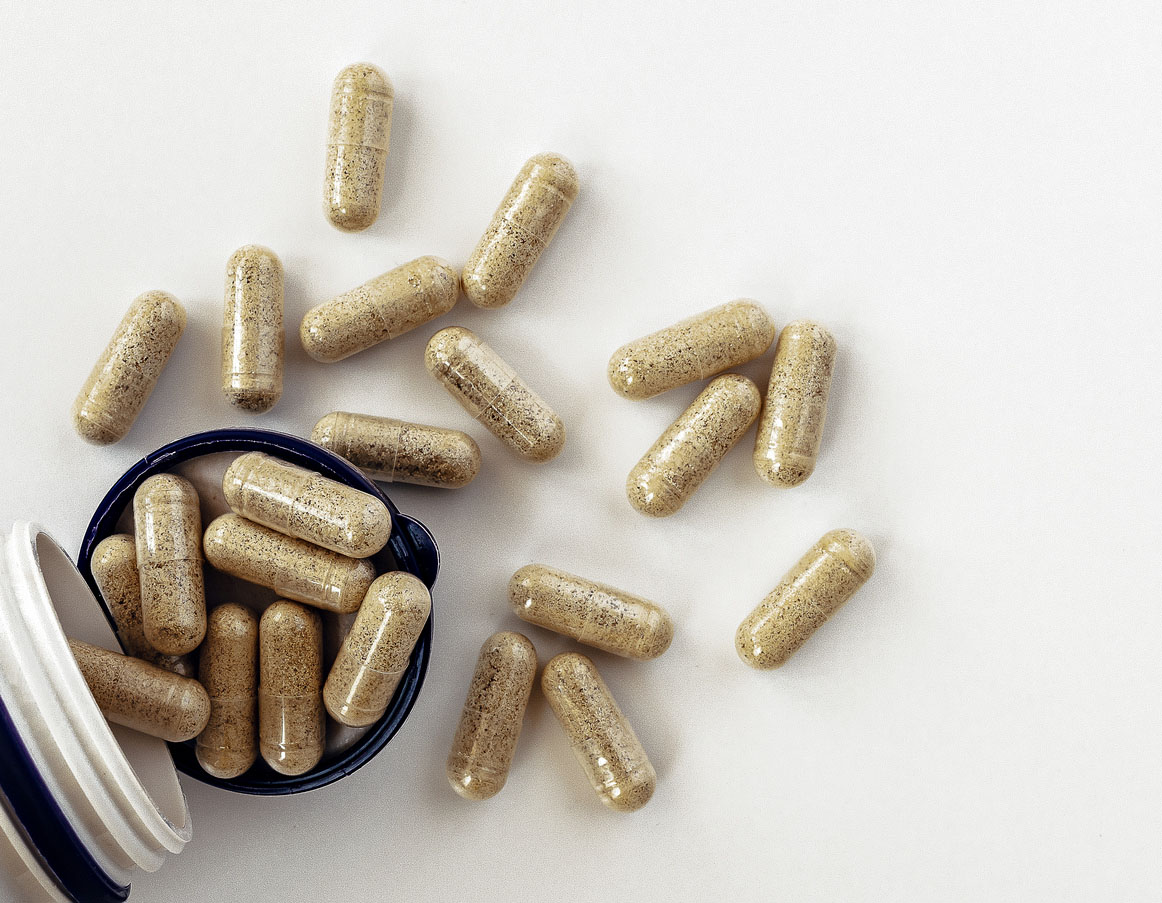Are you ready for some science? With respiratory health on everyone’s mind these days, here’s a deep dive on how to fortify your resilience from our friends at Protocol for Life Balance®.
—Dr. Ronald Hoffman
This article contains content from one of our trusted sponsors.
Every second of our lives, day and night, our immune defenses are working to protect our bodies against environmental aggressors. Our bodies are designed to keep these aggressors at bay with physical barriers (skin, mucosa) and a network of cells that produce antibodies, mediators, and free radicals. Inter-individual variations exist in many immune functions within the normal healthy population. These variations are related to a multitude of factors including age, smoking habits, socio-economic status, habitual levels of exercise, alcohol consumption, diet, menstrual cycle, stress, etc. Maintaining healthy mucosal barrier function and functional immune cells are necessary for the overall health of the immune system. The contribution of a healthy diet to the maintenance of normal immune function is well documented and the influence of various dietary supplements on specific aspects of immune function has been extensively studied.
Our respiratory system is divided into two main anatomic groups of organs: the upper respiratory tract composed of the nose, mouth, throat, and sinuses, and the lower respiratory tract composed of the trachea, bronchi, bronchioles, and alveoli. These organs are lined with different mucous membranes that work as barriers against environmental aggressors and immune defense systems.* We will detail below how different nutrients and dietary supplements can support upper and lower respiratory tract immune function.*
Amino Acids
N-acetyl cysteine (NAC) is a powerful dietary supplement used for the maintenance of healthy immune and respiratory function.* NAC is a stable form of cysteine, a sulfur-containing amino acid necessary for the formation of glutathione.1* In addition to its role as a precursor of glutathione, NAC can support respiratory health through its involvement with mucus secretion fluidity, alveolar surfactant production, and response to biological stress in the lungs.2 The clinical efficacy of NAC to support respiratory health has been well demonstrated.2*
Vitamins and Minerals
Among vitamins and minerals known to support immune and respiratory health, vitamins C, D, and zinc are amongst the most studied.3-6*
Vitamin C is known to enhance the function and proliferation of certain types of white blood cells.*7,8 This effect on the immune system has been clinically demonstrated with daily doses of vitamin C of 1,000 mg or more.*7,8 Vitamin C’s role in respiratory health has been explored in exercise-induced bronchoconstriction (EIB), which is a transient narrowing of the airways that occurs during or after exercise. The prevalence of EIB varies from about 10% in the general population to about 50% in some fields of competitive athletics. The mechanism behind EIB is not well understood but may be related to exercise-induced respiratory water loss or increased levels of exhaled nitric oxide. Pre-clinical data suggest that vitamin C plays a role in the regulation of the production of bioactive compounds (prostaglandins) involved in bronchoconstriction.* In a meta-analysis of three small randomized-clinical trials (n=40) 0.5 to 2 g of vitamin C administration before exercise was shown to have a beneficial effect in people who experience EIB.9*
Well before modern medicine, it was understood that sun exposure was related to respiratory health. We now know that vitamin D levels in the body are a key contributing factor. The daily dose of vitamin D required to support a healthy vitamin D status depends on vitamin D blood levels. As a rule of thumb, for each 100 IU of vitamin D3 supplementation, serum concentrations of vitamin D rise by 1 to 2 nmol/L (0.70 nmol/l for each mcg/d). For the maintenance of bone health in adults, the Institute for Medicine recommends that serum levels be maintained above 50 nmol/L (20 ng/mL); however, official recommendations have yet to be established with respect to the maintenance of healthy immune system function.*10 Observational population studies have shown that there is a clear relationship between respiratory health and blood levels of vitamin D, showing that optimal vitamin D blood levels may be 100 nmol/L or greater.*11
The role of zinc in supporting the immune system is also well established. Indeed, innate immunity is the first line of defense that is disturbed when zinc levels are low.* Zinc deficiency impairs cellular mediators of innate immunity such as phagocytosis by macrophages and neutrophils, natural killer cell activity, generation of the oxidative burst, and complement activity.* Due to its involvement in immune function regulation, zinc participates in the maintenance of lung epithelial cells and lung tissue repair.*
Plant-Derived Ingredients
In addition to vitamins and minerals, plant-derived ingredients such as olive leaf extract, larch tree extract, and quercetin are also useful for the support of respiratory and immune health.*
Olive leaf extract (OLE) is known to have higher amounts of polyphenols, including oleuropein, than those detected in the extra virgin olive oil and fruit. Laboratory experiments have shown that OLE is able to modulate both quantitatively and qualitatively healthy human peripheral blood mononuclear cells.12* Oleuropein has been extensively studied for its free radical scavenging properties and ability to modulate cellular response to biological stress.13,14* Furthermore, laboratory studies suggest that oleuropein may help support healthy lung tissue when exposed to environmental stress.15*
Among plant-derived compounds used for immune function regulation, larch arabinogalactan has been widely studied.* Arabinogalactans are complex carbohydrates (3,6-beta-D-galactan) commonly found in plants.16 Laboratory experiments have shown that arabinogalactans are able to modulate cellular immune function.17,18* Larch arabinogalactan may also act as a prebiotic to support healthy gut microbiota.17,18* Larch arabinogalactan supplementation has been evaluated in randomized clinical trials at the daily dose of 1.5-4 g. The results of these investigations suggest that larch arabinogalactan can modulate immune function in healthy individuals.19*
Quercetin is a flavonoid commonly found in plants including onions, broccoli, apples, and berries. Quercetin has been extensively studied in laboratory settings and is a known potent free radical scavenger that helps modulate cellular immune function.20,21* Quercetin may also support the maintenance of healthy lung tissue when lungs are subjected to environmental stressors.22-24* Quercetin supplementation has been studied in randomized clinical trials.25 In a double-blind, placebo-controlled clinical study with 20 healthy young athletes, 1 g/d quercetin significantly reduced immune reactivity to intense exercise after two weeks when compared to placebo.26*
Enzymes
Enzymes such as bromelain and serrapeptase, also known as serratiopeptidase, are a group of compounds with unique properties that can help with supporting immune function and respiratory health.* Bromelain is a proteolytic enzyme derived from pineapple. Laboratory experiments have shown that bromelain supports a healthy response to normal biological stress including in lung tissue.27-29* Results from randomized clinical trials suggest that bromelain may help support normal airflow in the upper respiratory tract.30* Serrapeptase is a proteolytic enzyme isolated from Serratia marcescens. Serrapeptase has been shown to help support a healthy response to normal biological stress in laboratory studies.31* Some pre-clinical evidence suggests that serrapeptase may support respiratory health by helping to maintain normal mucus secretion. 31-37*
Protocol for Life Balance®
Protocol For Life Balance® offers a wide range of immune system support supplements that can be used to support both immune and respiratory health.* Among them, Aller-All™ is a vitamin-botanical blend developed by Protocol For Life Balance® that includes vitamin C, zinc, quercetin, bromelain, and other super nutrients for immune and respiratory support.* We offer two NAC products (600 mg vegetable capsules and 1,000 mg tablets), and a powerful Serrapeptase dietary supplement boasting 60,000 serratiopeptidase units per capsule. Finally, in this category of immune and respiratory health-supporting products, we have A-Biotic Immune+, an original formula blending vitamins C and D and zinc with botanicals, including olive leaf extract and arabinogalactan from larch.
* These statements have not been evaluated by the Food and Drug Administration. These products are not intended to diagnose, treat, cure, or prevent any disease.
References:
- Dodd S, Dean O, Copolov DL, Malhi GS, Berk M. Expert Opin Biol Ther. 2008;8(12):1955-1962.
- Raghu G, Berk M, Campochiaro PA, et al. Current neuropharmacology. 2021;19(8):1202.
- Hemilä H. Trends in immunology. 2003;24(11):579-580.
- Skalny AV, Rink L, Ajsuvakova OP, et al. International journal of molecular medicine. 2020;46(1):17-26.
- Allan K, Devereux G. Journal of the American Dietetic Association. 2011;111(2):258-268.
- Nurmatov U, Devereux G, Sheikh A. Journal of Allergy and Clinical Immunology. 2011;127(3):724-733. e730.
- Wintergerst ES, Maggini S, Hornig DH. Annals of Nutrition and Metabolism. 2006;50(2):85-94.
- Wintergerst ES, Maggini S, Hornig DH. Annals of Nutrition and Metabolism. 2007;51(4):301-323.
- Hemilä H. BMJ open. 2013;3(6):e002416.
- Calcium IoMUCtRDRIfVDa, Ross AC, Taylor CL, et al. Dietary Reference Intakes for Calcium and Vitamin D. Washington, DC: National Academy of Sciences.; 2011.
- Berry DJ, Hesketh K, Power C, Hyppönen E. British Journal of Nutrition. 2011;106(9):1433.
- Magrone T, Spagnoletta A, Salvatore R, et al. Endocrine, Metabolic & Immune Disorders-Drug Targets (Formerly Current Drug Targets-Immune, Endocrine & Metabolic Disorders). 2018;18(1):85-93.
- Qabaha K, Al-Rimawi F, Qasem A, Naser SA. Journal of medicinal food. 2018;21(3):302-305.
- Barbaro B, Toietta G, Maggio R, et al. International journal of molecular sciences. 2014;15(10):18508-18524.
- Kim Y-H, Choi Y-J, Kang M-K, et al. Journal of agricultural and food chemistry. 2018;66(29):7643-7654.
- Dion C, Chappuis E, Ripoll C. Nutrition & metabolism. 2016;13(1):1-11.
- Fitzpatrick A, Roberts A, Witherly S. AGRO FOOD INDUSTRY HI TECH. 2004;15(1):30-32.
- Kelly GS. Alternative medicine review: a journal of clinical therapeutic. 1999;4(2):96.
- Dion C, Chappuis E, Ripoll C. Nutrition & Metabolism. 2016;13(1):28.
- Lakhanpal P, Rai DK. Internet Journal of Medical Update. 2007;2(2):22-37.
- Weng Z, Zhang B, Asadi S, et al. PloS one. 2012;7(3):e33805.
- Rizky WC, Jihwaprani MC, Mushtaq M. The Egyptian Journal of Bronchology. 2022;16(1):58.
- Fortunato LR, Alves CdF, Teixeira MM, Rogerio AP. Brazilian journal of pharmaceutical sciences. 2012;48:589-599.
- Townsend EA, Emala Sr CW. American Journal of Physiology-Lung Cellular and Molecular Physiology. 2013;305(5):L396-L403.
- Yamada S, Shirai M, Inaba Y, Takara T. Eur Rev Med Pharmacol Sci. 2022;26(12):4331-4345.
- Gholami M, Ardestani M. Asian Journal of Sports Medicine. 2018;9(3).
- Maurer H. Cellular and Molecular Life Sciences. 2001;58(9):1234-1245.
- Secor Jr ER, Carson IV WF, Cloutier MM, et al. Cellular immunology. 2005;237(1):68-75.
- Secor ER, Carson WF, Singh A, et al. Evidence-Based Complementary and Alternative Medicine. 2008;5(1):61-69.
- Colletti A, Li S, Marengo M, Adinolfi S, Cravotto G. Applied Sciences. 2021;11(18):8428.
- Bhagat S, Agarwal M, Roy V. International Journal of Surgery. 2013;11(3):209-217.
- Ahlstedt S, Hessel B, Nilsson B, Sohl-Åkerlund A, Wedel I, Widström O. International Archives of Allergy and Immunology. 1983;70(1):92-95.
- PC B. Pharmaceutical Res. 1990;5(22):611-617.
- Majima Y, Inagaki M, Hirata K, Takeuchi K, Morishita A, Sakakura Y. Arch Otorhinolaryngol. 1988;244(6):355-359.
- Nakamura S, Hashimoto Y, Mikami M, et al. Respirology. 2003;8(3):316-320.
- Mazzone A, Catalani M, Costanzo M, et al. Journal of International Medical Research. 1990;18(5):379-388.
- Jadhav SB, Shah N, Rathi A, Rathi V, Rathi A. Biotechnology Reports. 2020;28:e00544.







